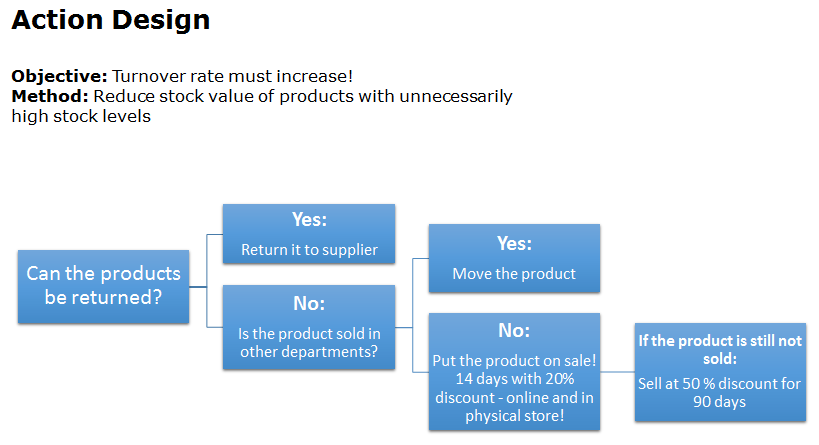Observations from the supply chain field: Optimization results flourish when the responsible stakeholders master basic project management.
This article covers best practice recommendations based on +200 ABC implementation projects. Read them to increase your change of success with ABC Analyzer and supply chain optimization.
Best Practice Recommendations
- Create consensus: What will you solve with this project?
- Define measurable goals
- Track progress and visualize it
- Make sure the management team allocate the needed resources, and pinpoint which existing operations/projects to downscale
- Host follow-up meetings regularly: Analyze efforts and effect
- Make well-defined descriptions of roles and responsibilities
5 phases: Create long-lasting effect & value
It is not a coincidence whether a new piece of software and a company make a match.
The implementation of new software and new work routines spans five crucial phases which a company must navigate safely to accomplice success. The goal is to optimize and create long lasting effect for the company.
Phase 1. Set an objective
Start by building consensus on the main objectives of the project. Involve the employees whose work life will be affected, and those who administer resources the project depends on. Have a look at the Top 5 Supply Chain Opportunities, most likely more than one will be on your list
“If you don’t know where you are going, any road will get you there.” Alice in Wonderland
It is difficult to define a project in details. Don’t lose heart. Forming opinions and defining the objective will become clearer as the project moves forward. Start by defining: What will you solve with this project?
Phase 2. Define project goals – then throw away 50 %
It is hard to set realistic goals and delimit a project when energy levels run high. Focus and prioritization are the be-all and end-all for a project’s success. Many companies want to: Analyze their suppliers, optimize stock value and segment their customers … all in one go.
Instead, divide the project into sub-phases. Channel the team members’ energy to the current sub-phase and ensure the greatest impact. At ABC, we divide a project into a minimum of three phases: Product analysis, supplier analysis and customer analysis.
Phase 3. Communicate the new workflows
When the objective (the project framework) is in place, it’s obvious which of the current workflows and reward models that have to change to support the new objective.
In this phase you develop your analysis in ABC Analyzer, and setup three to five reports to support the overall objective. The reports highlight the products which are a part of “the problem” or a part of the “solution”
Action design – from analysis to action
It is necessary to define an ‘action design’ for each ABC report. The “action design” explains how the individual employee should handle the products in the report. For example, the report ‘AC products with surplus stocks’ is combined with the following actions design (see below).
Phase 4. Most employees wait for the change to pass …
… and look forward to return to their familiar work routines.
It is crucial communicate that the change is here to stay. Plan your communication for the three stages: before, during and after the project. Help the employees to understand and accept the new situation and change their behaviour. For ABC projects, it is primarily a question of employees understanding the value of the ABC analysis. Once the understanding is in place the acceptance will pave the way for change.
Communication is a fundamental element when implementing new software tools, and ABC Softwork has developed courses and tools to support your company.
Phase 5. Welcome to a ‘new working day’
The last phase cover the transition from implementation to daily operations. This phase reflects the quality of the preceding phases. If the objective (phase 1) has been too vague, the project too broad or the communication inadequate, it shows now.
To ensure that the ABC mind-set and tools are well-integrated in daily routines, it is important that the day-to-day management focus on follow-up and brand the results achieved. In order to showcase and “brand” the results achieved with ABC, we have developed the ‘ABC Poster’ and the maturity analysis.

